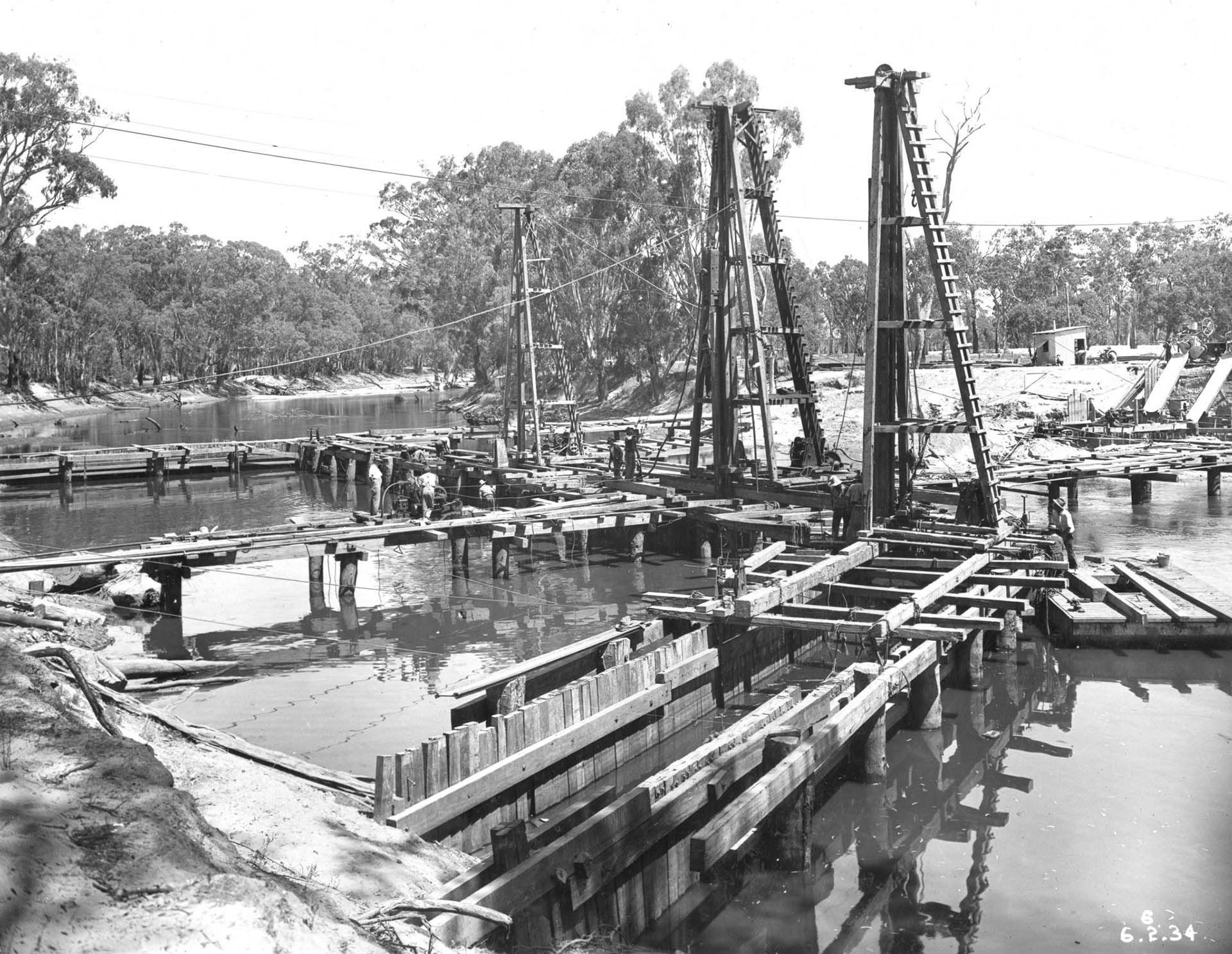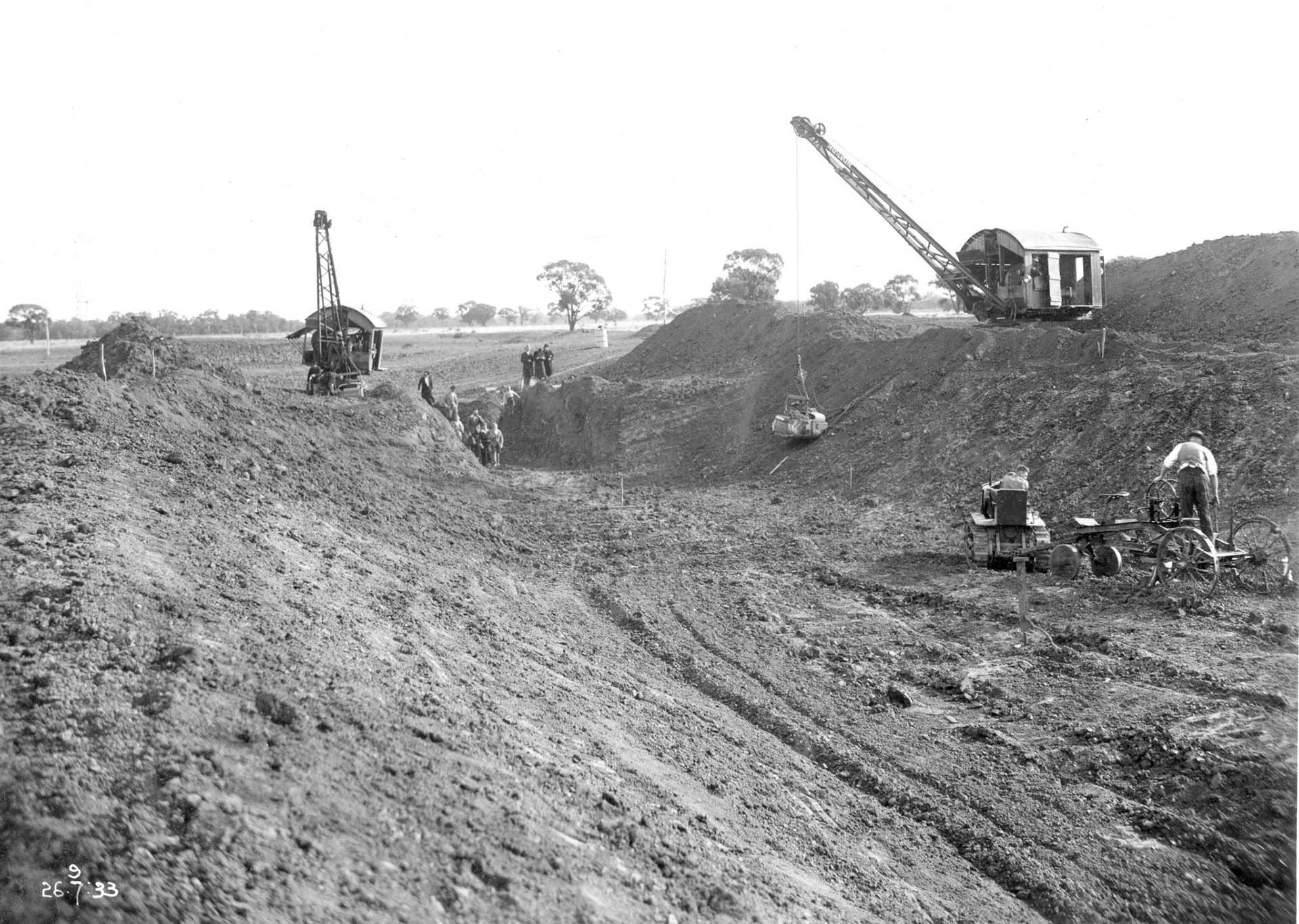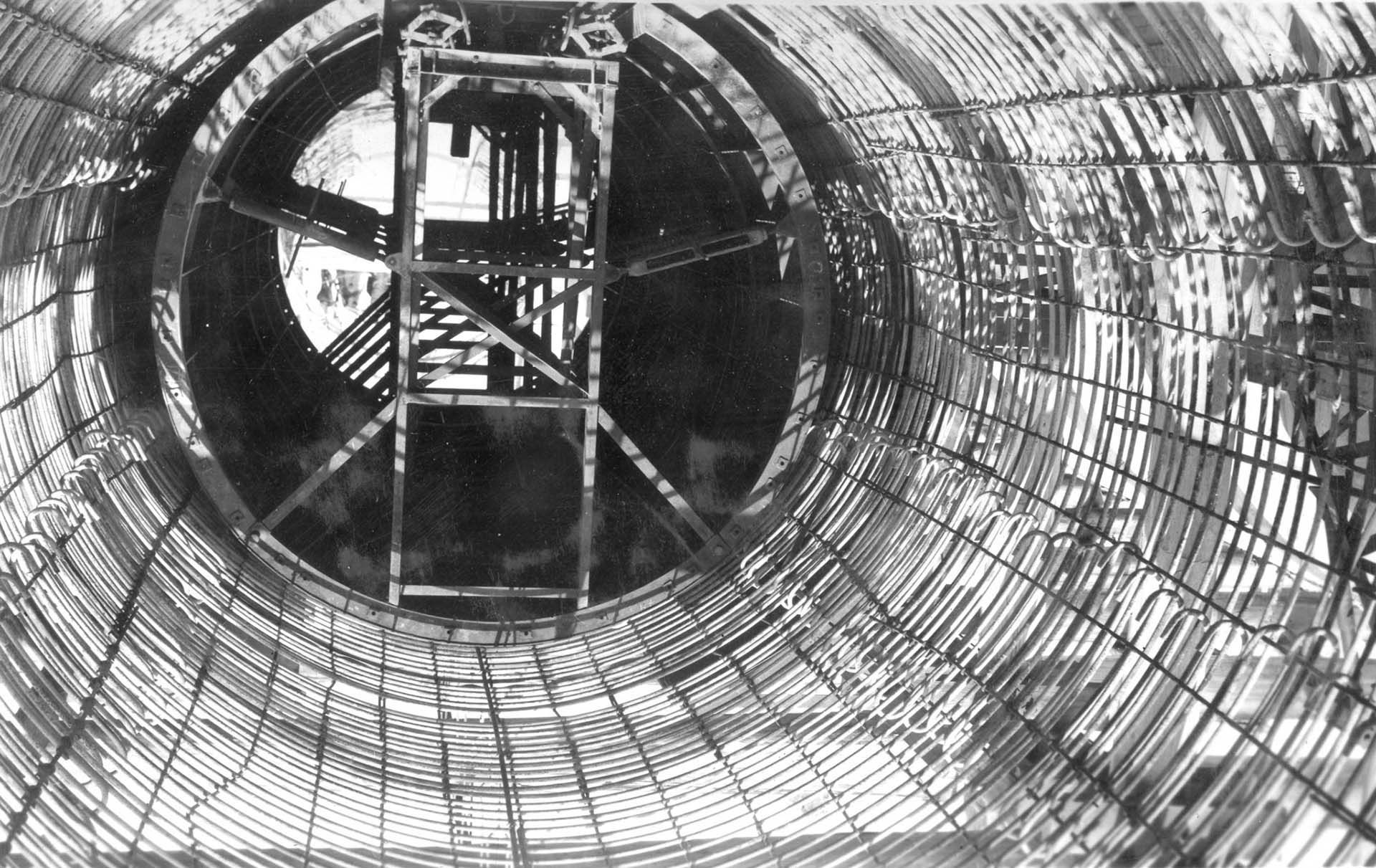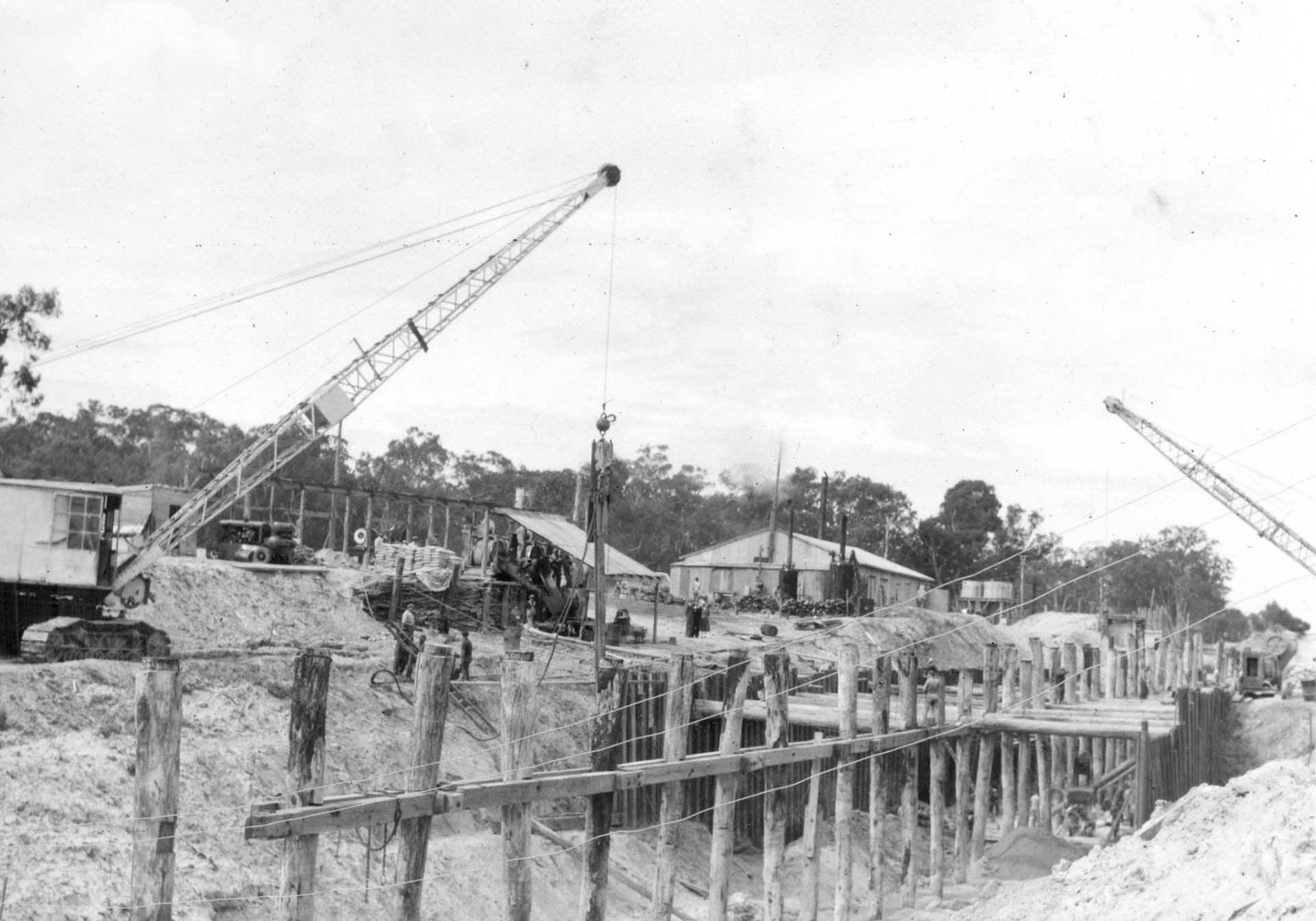Murray Irrigation
Our History

Irrigation in the Southern Riverina was initially developed as a form of “drought proofing”
The aim was to provide a reliable source of water to a region regularly devastated by drought. Between 1933 and 1964 the NSW Government undertook the development of the state’s largest irrigation network fed by the waters of the Murray River.
In 1995, control and operation of the irrigation system was handed over to the irrigators it served, through the formation of the privatised company Murray Irrigation Limited.
Today the system provides vital water supplies to more than 740,000 hectares of farmland. The residents of Berrigan, Finley, Wakool and Bunnaloo all rely on the irrigation system for their town water. Irrigation also underpins the security of Deniliquin’s town water supply and directly supports a regional population of 25,000.


History of Irrigation
Early irrigation (late 1800 - 1901)
In the years of good rainfall, the Southern Riverina region offered opportunities for graziers who were settling the land in the late 1800s. However, regular droughts led individual landowners to begin experimenting with irrigation, using steam driven pumps and weirs on larger rivers and creeks. This often lead to violent conflict with downstream neighbours, who occasionally resorted to explosives to remove the weirs.
Landholders began lobbying the NSW Government for water conservation dams and irrigation systems as early as the 1870s. By 1901 the State joined the Federation of the nation. This offered some promise to local landholders that an agreement on the use of the waters for irrigation would soon follow.
Disputed waters and the Murray River Agreement (1901 - 1915)
Despite Federation, there was still no agreement on the waters of the Murray River by 1902. Debate about control of the nation’s water resources, and the Murray River in particular, is said to have almost derailed Federation. The conflict was mostly between NSW and South Australia.
NSW wanted the water for irrigation and closer settlement.
South Australia wanted to ensure enough water remained in the river to continue its highly profitable river boat trading.
In areas where water was not in dispute irrigation development began. Water conservation and irrigation schemes were operating in this region as early as 1912, but irrigation was still more than two decades away for the Southern Riverina.
It was not until 1915, following another three years of severe drought, that the States and Commonwealth finally signed the Murray River Agreement which outlined a program of works for water conservation and navigation.
Building the Hume Dam (1919 - 1928)
Hume Dam was one of the first water conservation works in the Murray River Agreement and work began in 1919. At this time a new wave of settlers, including ex-servicemen returning from the World War I, arrived to the area. However, in the 1920s another serious drought led many to simply walk away from their land.
Hume Dam first began controlling water flow into the Murray River in 1925. With control of the Murray now possible, the NSW Water Conservation and Irrigation Commission began plans for irrigation in the Southern Riverina.
By 1926 landholders in the Barham-Wakool region had a proposal for irrigation in their area. The scheme required a weir 15 miles west of Deniliquin to hold up the level of the Edward River. The weir would allow water to be channelled through the Colligen Creek into the irrigation network.
In 1928 the Government announced that a development based on this proposal would go ahead, when funds became available.
The Mulwala Canal and Yarrawonga Weir (1928 - 1939)
In addition to the Wakool Irrigation District, the Water Conservation and Irrigation Commission (WC&IC) approved the further development of the Berriquin and Deniboota Irrigation Districts.
These new districts required the construction of a major irrigation channel known as the Mulwala Canal. The canal draws its water from the Murray River at Lake Mulwala and stretches 156km to the west through Berrigan, Finley and Deniliquin.
Construction of the Mulwala Canal and Yarrawonga Weir began in 1935. Both projects provided significant employment relief during the Depression. More than 500 men were working on the Mulwala Canal when construction was in full swing.
By 1939, Yarrawonga Weir was complete and the Mulwala Canal had been completed as far as Finley. The first water in the Berriquin District was officially delivered in April 1939, with NSW Premier Alex Mair conducting the official opening.
The Lawson Syphons (1939 - 1964)
The year the Berriquin Irrigation District opened work also began on the Lawson Syphons. These syphons would carry the Mulwala Canal beneath the Edward River to supply water to the Deniboota Irrigation District.
Work was expected to take four years, but a few weeks after construction began Australia was launched into World War II. Initial planning and preparations continued until 1942 when work was finally suspended due to a shortage of materials and manpower.
Following World War II, work on the syphons resumed and continued for the next decade. During this time they experience repeated flooding in the Edward River as well as material and labour shortages. A wave of immigrants from Britain and other European countries provided much needed manpower.
The NSW Government had trouble at times raising loan funds for major works, but the Lawson Syphons and Deniboota scheme were high on the list of projects “in the national interest” and received priority.
The Lawson Syphons were completed and officially opened by NSW Premier John Cahill on April 27, 1955. Find out more about Lawson Syphons.
The development of the irrigation network continued until the last channels were completed in 1964. The total length of the supply network is almost 3,000 kilometres.
Continuing growth (1960 - 1974)
The early and mid 1960s experienced more low rainfall and drought conditions, however farms and towns in the region now had access to secure water supplies which considerably softened the impact of the drought.
This didn’t come without difficulty, for the first time the demand for water along the Murray River outstripped supply. This led to the NSW Government introducing volumetric allocations in the 1966/1967 season. There would be no new water allocations in the irrigation districts, and a limit was set on how much water landholders could use.
Drought continued that year and, with the new rules in place, some landholders found that they no longer had enough water for their crops. This same year the first water trades between local landholders were recorded.
The intensity of irrigation in the region has continued to increase, resulting in greater production and improved farm incomes. Farm enterprise diversity has helped to stabilise local economies, and supported more secondary and tertiary industries in local communities.
Self determination (1975 - 1995)
Water prices have been a constant cause of concern for irrigators. In 1975 mass meetings were held to protest the latest price rises, with irrigators suggesting that perhaps they should take on the running of the irrigation system themselves.
Dissatisfaction with irrigation operations continued to escalate in the following years. When irrigators in the region were faced with another major price rise in 1987 they united in a “no pay” stance.
One of their key complaints was that not enough of the money collected through water sales was being returned to maintain and improve local infrastructure. The NSW Government responded by setting up Irrigation Advisory Management Boards and giving irrigators greater involvement in the operation and management of their regions.
Irrigators began lobbying in earnest for autonomous control and ownership of their regional irrigation networks. It took more than five years of negotiations to reach an agreement.
In early 1995 more than 700 irrigators voted to support a fully irrigator-owned water supply company in the Southern Riverina. The NSW Government then enacted the final legislation which allowed the hand-over of its irrigation network in the region, and in other parts of the state, to irrigators.
Water availability will be one of the greatest challenges facing the future of Murray Irrigation and its irrigators. In addition to climatic factors, there is growing competition for the available water resources from a range of players.

Want to learn more?
Visit the History of Irrigation website and discover how the NSW Murray Valley irrigation system was developed.








